Are Your Cleans Doing What They Are Supposed to do?
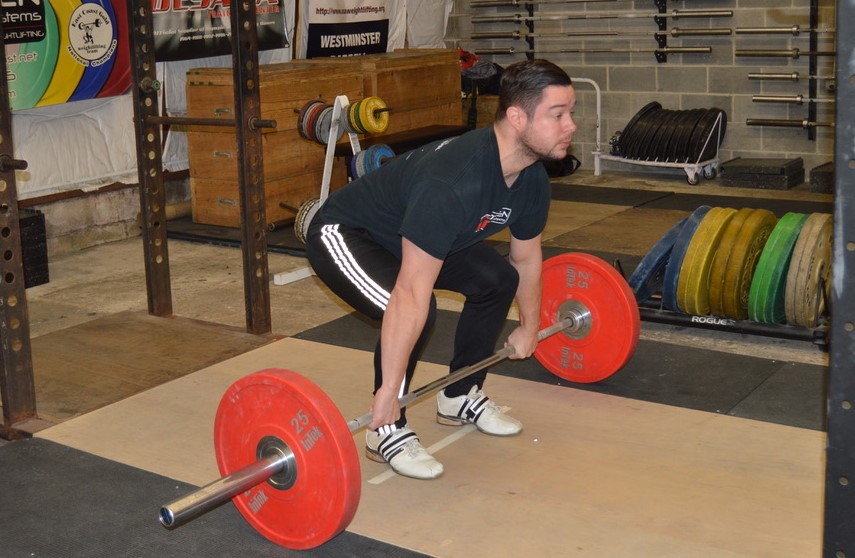
Written by Leo Totten, MS, USAW 5
Whether your sport is powerlifting, strongman, football or any other “strength” sport, the power clean should be part of your workout plan. Obviously, the major emphasis of your training should be whatever discipline you are participating in, but including power cleans at the right time can enhance the performance in any strength sport.
When choosing the exercises to be put into your program, there are two primary considerations to keep in mind. Does the exercise fit a need or purpose and are the athletes able to perform the exercise correctly so it actually accomplishes what it is supposed to do?
Whatever exercises the coach puts into the program for their athletes, there should be a definite purpose as to why that exercise is being done. Why waste time doing exercises that have no functional value in helping the athletes achieve their goal of strength and power? Choose the best exercises for time efficiency and if the athlete knows the rationale behind it, they will buy into the program much more readily.
Power cleans should definitely have a place in your program. The benefits have been well documented – power development, core stability, flexibility development, cardiovascular improvements as well as balance and overall athletic ability.
All that being said, some coaches feel that teaching power cleans is too difficult or too time consuming and choose not to include the exercise in their training. But, utilizing a time proven method of teaching the step-by-step progressions, power cleans can be included easily into the coach’s “toolbox” of exercises.
The “pull” part of the power clean utilizes the “triple extension” of the hip, knee and ankle, thereby working all the major muscles of the core, hips, quads and hamstrings. Think of the pull as a vertical jump motion with a weight in your hands. To note, Olympic lifters typically have excellent vertical jumps, a primary test of leg power used by most coaches and athletes. This triple extension movement has a high correlation to athletic performance if done properly. The bar has to stay close to the body with emphasis on vertical displacement of forces. For every action, there is an equal and opposite reaction. Force into the ground causes more powerful forces upward. As little horizontal displacement of the forces as possible is desired.
The following photos show the key positions for the most efficient technique:
Photo 1: Start position for the pull
- Back flat
- Shoulders in front of the bar
- Arms straight
- Focal point straight ahead
- Bar close
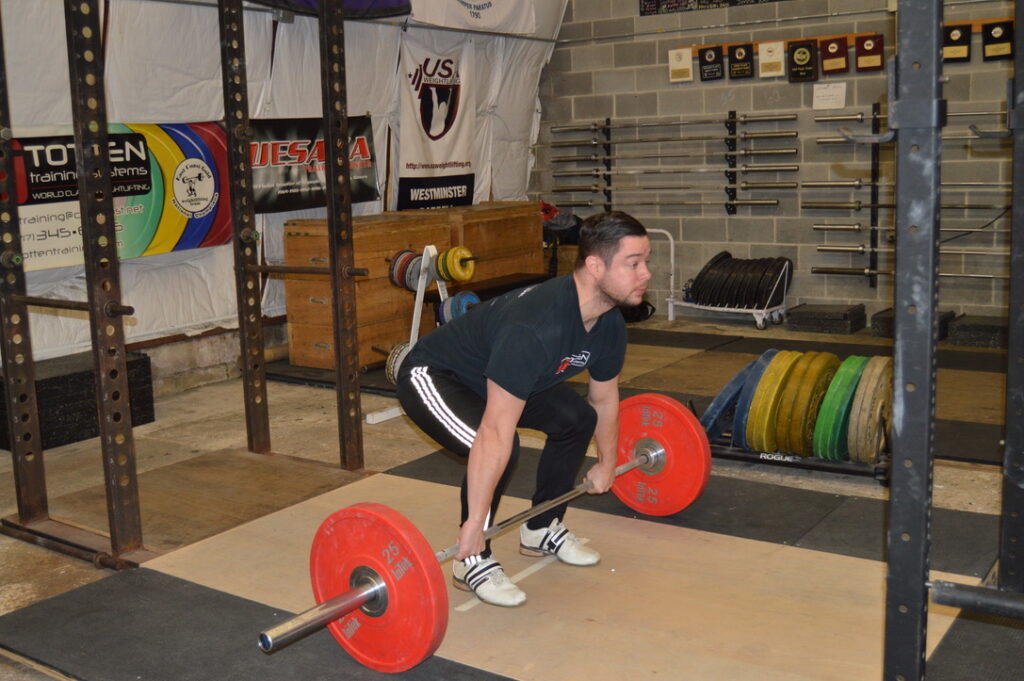
Photo 2: Bar at the knees
- Back still flat
- Shoulders still in front of the bar
- **Athlete should feel hamstring stretch
- Arms still straight
- Focal point still straight ahead
- Bar still close
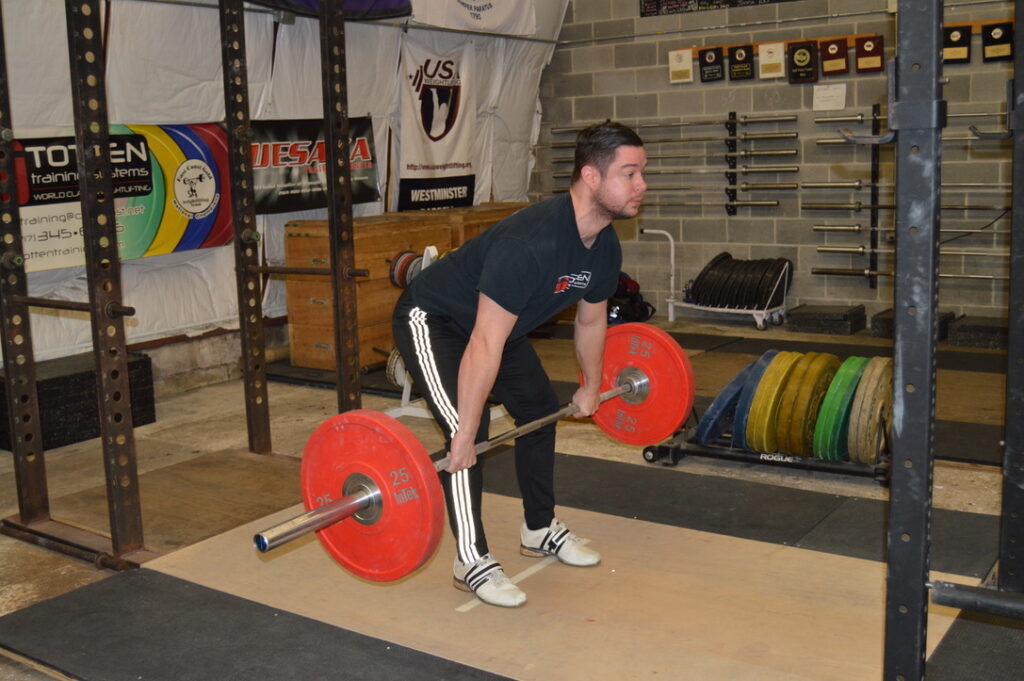
Photo 3: Power position
- Back still flat
- Shoulders still in front of the bar
- **Athlete now in a “jumping” position
- Arms still straight
- Focal point still straight ahead
- Bar still close
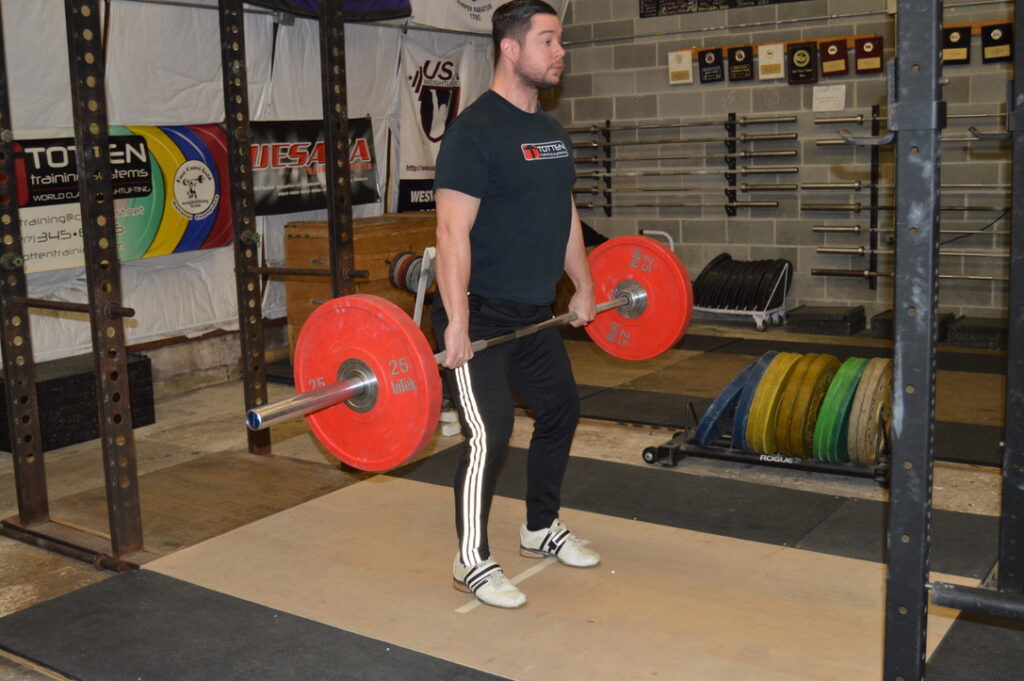
Photo 4: Extension
- Triple extension (hips, knees, ankles)
- Shoulders vertical “shrug” (as a follow through after the triple extension)
- Back still flat
- Arms still straight
- Focal point still straight ahead
- Bar still close
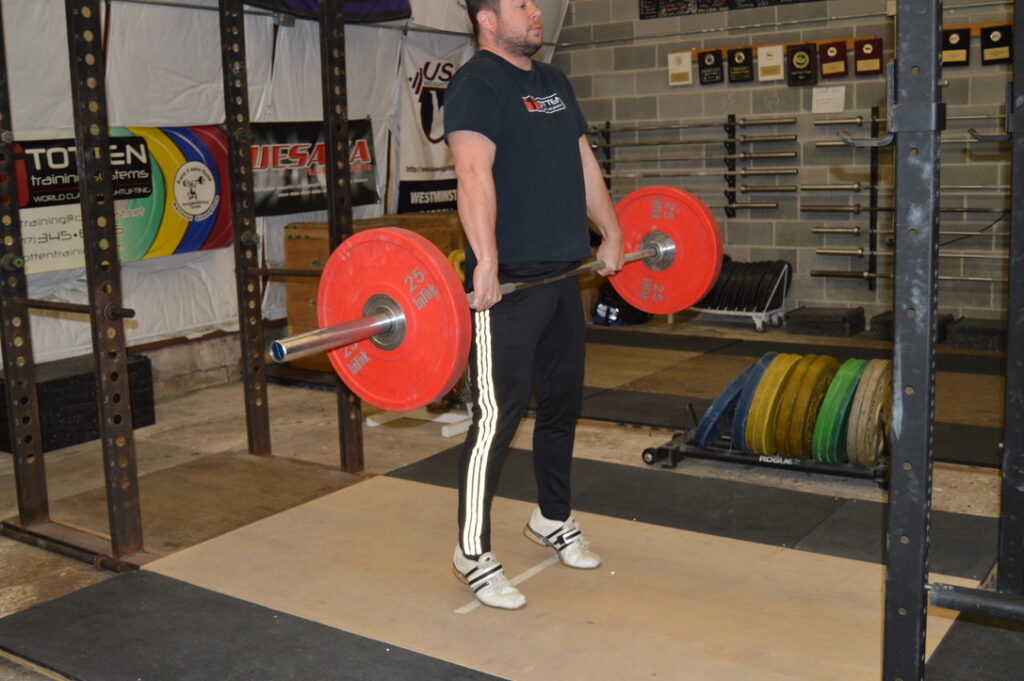
The “receiving” position (or the “catch” or “rack”) is how the bar is received on the chest (actually, the bar will lie across the clavicles and shoulders) after the explosive pull motion. By “receiving” the bar on the chest, now the athlete is working functional core stability, working on deceleration and absorbing forces. Most sports are all about exerting force but also receiving forces. However, if lack of flexibility is preventing you from receiving the bar in the proper position, you can still do the “pull” motion to get the benefit from that explosive, triple extension. As flexibility improves, then the power clean can be finished correctly.
Photo 5: “Receiving” position
- Strong “front squat” position
- Bar on clavicles and front deltoids
- Centre of gravity of the bar is in line with the center of gravity of the body
- (the body supports the weight, not the hands)
- Elbows up
- Maintain tight core
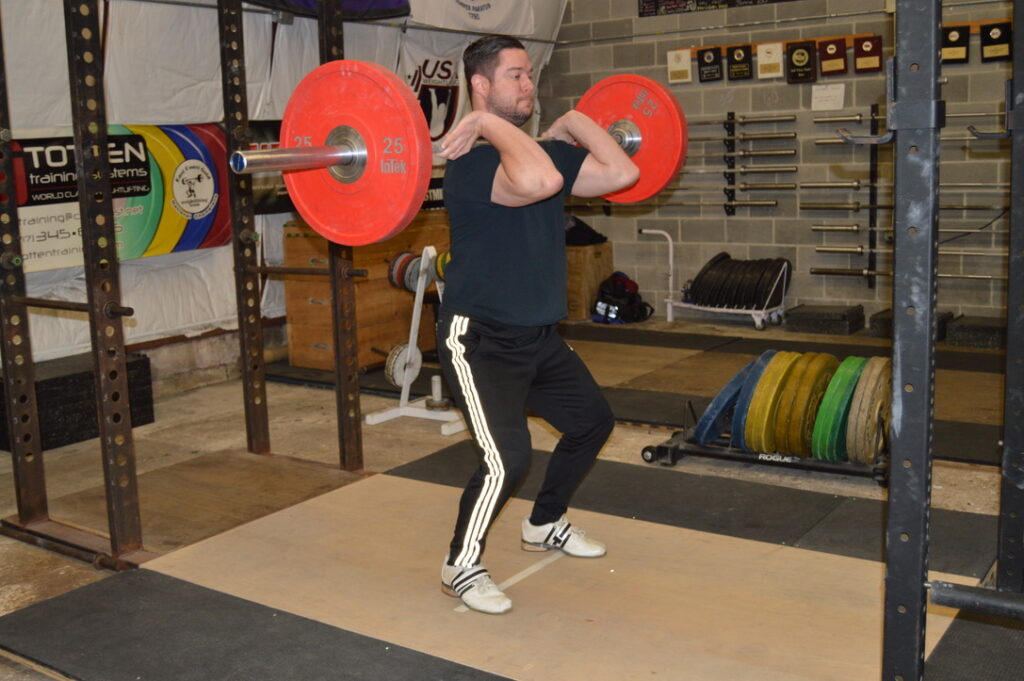
So, the question becomes, are your athletes doing their power cleans correctly to reap the benefits and actually accomplish what they are meant to accomplish? Are the lifts being done in a safe, efficient manner?
- Is the bar staying close to the body or is it a glorified reverse curl?
- Are the athletes in the correct position to accelerate through the “power position”?
- Is the bar “crashing” when receiving the bar on the chest or is the bar received in a smooth, effective manner?
- Is a flat back and tight core being maintained during the pull as well as the catch?
- During the “catch”, is the weight supported by the body or is all the weight on the hands and wrists?
- Has a logical teaching progression been followed to individualize for athletes of differing abilities?
- Have appropriate assistance exercises been utilized to work on the weak areas of the lift?
These are some of the questions that a coach needs to ask themselves when having their athletes performing power cleans. It is your job to continually monitor and assess that what they are doing is safe and accomplishing what they are supposed to accomplish. Continue to develop an “eye” for proper technique and learn how to fix any deficiencies the athletes may have. The amount of weight is important, but not at the expense of proper form and proper speed of execution.
Power cleans can be a great addition to your arsenal of exercises in your program, but only if done correctly to get the full benefit.
You can find Leo @tottentraining on Facebook or Instagram.







